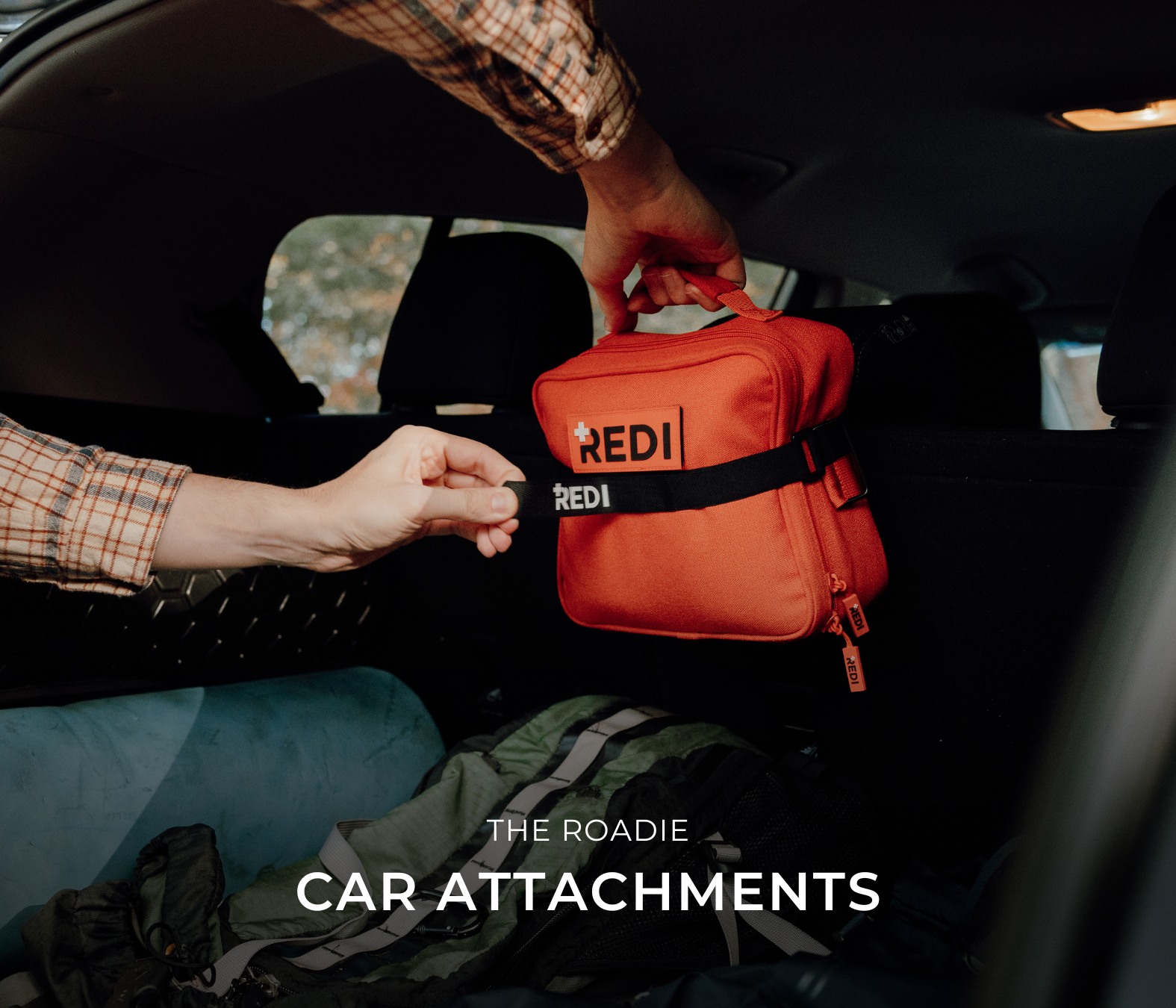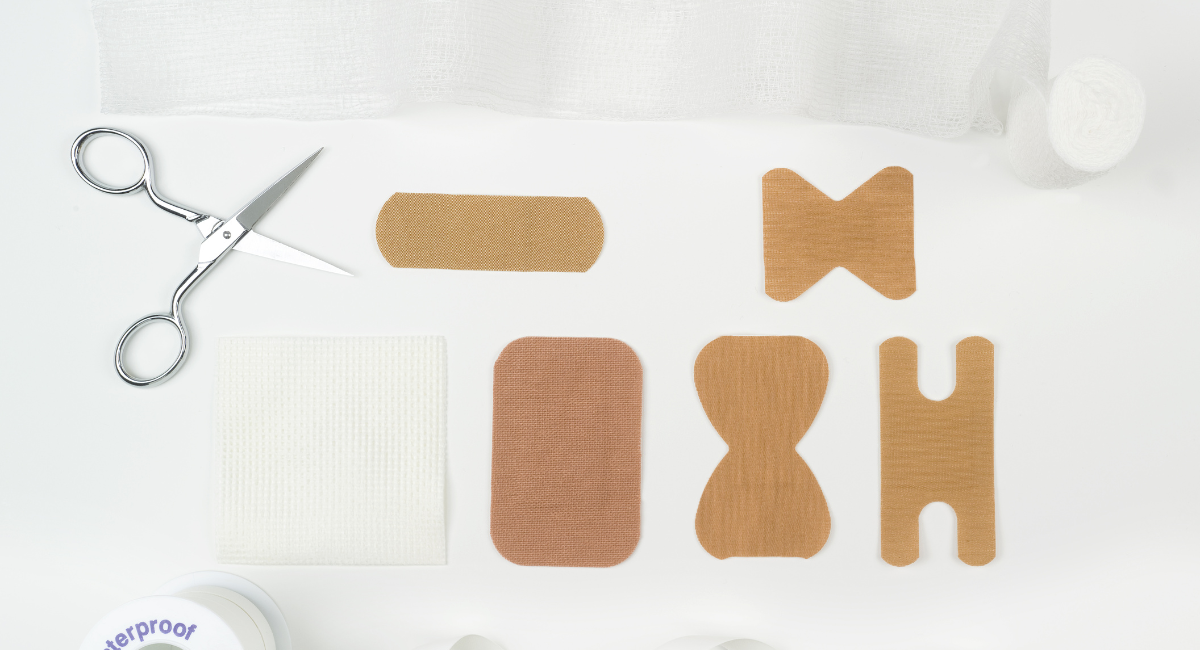As a pet owner, it's important to be prepared for any emergency situation that may arise with your furry friend. One way to do this is by having a well-stocked dog first aid kit on hand. In this week of Get Redi, we will discuss the essential items that every dog owner should have in their dog first aid kit, as well as how to use them properly. We'll also provide tips on how to create a customized first aid kit for your specific dog and their needs.
So whether you're a new dog owner or a seasoned pro, this guide will help ensure you're prepared for any emergency that may come your way.
While this blog post specifically focuses on dog first aid kits, the information and tips provided can also be applied when creating a first aid kit for other types of pets, such as cats, or other small animals. The principle of having a well-stocked first aid kit on hand to provide immediate care in case of an emergency applies to all types of pets!
Can you use a first aid kit on a dog?
Yes, a first aid kit can be used on a dog. However, it is important to note that not all of the contents of a human first aid kit may be appropriate for use on a dog. It is always best to consult with a veterinarian before administering any kind of treatment to a dog, as certain medications and other items that are safe for humans can be harmful or even deadly to dogs. Additionally, it is important to have a basic understanding of first aid for dogs so that you can provide appropriate care in case of an emergency.
Dog First Aid Kits
A dog first aid kit is an essential tool for any dog owner. It can help you provide the necessary care for your dog in case of an emergency, potentially saving their life.Injuries or illnesses can happen at any time, and if you have an active dog, you know it is only a matter of time until they get themselves into trouble. Having a dog first aid kit on hand can also ease your mind, knowing that you have the tools and supplies to handle any situation that may arise.
5 Reasons Why You Need a Dog First Aid Kit in Your Car and Home.
1. Emergencies can happen anywhere:
A pet first aid kit in your car ensures that you are prepared while on the road or away from home - whether it's a car accident, sudden illness/injury, or to help another dog owner's pet.
2. Immediate action can save a dog's life:
A pet first aid kit can provide you with the tools and supplies you need to take action in case of an emergency, which can potentially save your dog's life.
3. Peace of mind:
Knowing that you have the necessary resources to relieve pain and administer treatment can provide peace of mind and confidence to handle any situation that may arise.
4. Customization:
Having a pet first aid kit at home and in your car allows you to customize the kit according to your dog's specific needs and any known allergies or medical conditions.
5. Traveling with your dog:
If you frequently travel with your pup, it's important to have a first aid kit in your car, so you can provide the necessary care in case of an emergency while on the road.
If you carry a first aid kit in your car and house, it can also save you money. For minor wounds, at home treatment can be more than enough to treat your pup.
If you didn't have those supplies on hand, it would have resulted in a trip to the vet, which can be extremely costly. Although a DIY dog kit isn't free, having one on hand could save you a few visits to the vet.
Where to Keep Your Pet First Aid Kit
It's important to have your dog first aid kit in a place that is easily accessible, such as your home, car, or in a backpack if you're going on a hike with your dog. Make sure that everyone in your household knows where the first aid kit is located and how to use it. In the warmer months, road trips or afternoon's at the dog park may become more frequent which is why we suggest having at least two pup first aid kits.
10 Essentials of a Doggie First Aid Kit
- Sterile gauze pads and adhesive bandages for wound care
- Flashlight and antiseptic wipes/solution to identify and clean wounds
- Tweezers for removing splinters or other foreign objects
- Scissors for cutting gauze and bandages
- A digital thermometer to check for fever
- A muzzle or cloth strip to prevent biting during treatment
- A styptic powder or pen to stop bleeding from nail trims or minor cuts
- A pet-specific antiseptic ointment to prevent infections
- Contact information for your veterinarian and the nearest animal hospital.
- A blanket or towel to keep the dog warm and comfortable
Keeping an injured pet warm is important to prevent shock and/or hypothermia. Low body temperature can slow down the body's metabolism and reduce the oxygen supply to the vital organs, which can lead to serious complications and even death.In case of injury, the use of a thermal blanket can help to keep the injured dog warm and maintain their body temperature. This can help to prevent shock and improve blood flow to the vital organs. It is also important to note that on hot days, it is important to provide a shaded area and water to help keep your dog cool, as well as avoiding strenuous activities.
Common Injuries That Can Be Treated with Your Dog First Aid Kit
A dog first aid kit can be used to treat a variety of common dog injuries, some examples include:
- Cuts and scrapes: A small cut or scrape can be cleaned with antiseptic wipes or solution, and then covered with a bandage. Be sure to carry a decent sized of solution so that you are able to flush wounds appropriately.
- Burns: Minor burns can be treated by cleaning the area with water and covering it with a sterile gauze pad.
- Sprains and strains: A sprained or strained limb can be immobilized with a splint or bandage, and wrapped with an elastic bandage.
- Insect stings and bites: To relieve itching and inflammation caused by insect bites and stings, you can apply a cold pack wrapped in a towel to the affected area.
- Minor eye injuries: Minor eye injuries can be treated by flushing the eye with sterile saline or water and covering the eye with a clean bandage or gauze.
- Tick and flea infestations: tick and flea infestations can be treated by using tick and flea repellents, or by removing the tick or flea with tweezers. Tweezers allow for a precise grip on ticks, making it easier to remove, and if the tick is engorged, tweezers also help to remove it without squeezing its body and increasing the risk of infection.
It's important to note that this is a basic list and that it's not exhaustive, some injuries may require professional veterinary attention. Before putting together your DIY dog first aid kit, it is important to consult with a veterinarian first. We also suggest taking a professional pet first aid training course to know how to deal with different injuries.
When treating or assessing any of the above, it is crucial to have a high quality flashlight on hand.
Why? Well with dogs that have thick, long, and heavy coats, getting to the site of an injury can be difficult. Regardless of the type of fur your dog has, a flashlight can be especially helpful when examining an injury. The extra light can help you better identify the location and extent of the injury.
When using a flashlight to examine an injury under the fur, it's important to part the hair gently with your fingers or a comb, so you can get a clear view of the wound. You can also use the flashlight to shine a light on the area from different angles, to help you identify any abnormalities that may not be visible from one perspective.
The flashlight included in your pet first aid kit should have a focused beam. A focused beam will help you to see small details in the injury area, such as cuts or scrapes, or to see if the wound is infected or not.
However, even with a flashlight, some injuries might be hidden or difficult to see so if you are not sure about the injury, or if it's not healing, it's best to consult with a veterinarian.
How to Treat An Open Wound On Your Dog
- Stop the bleeding: If bleeding, apply direct pressure to the area with a clean cloth or bandage to try to stop the bleeding.
- Clean the wound: Clean with clean water and a mild soap. If dirty, use a mild antiseptic solution or wipes to clean it.
- Apply an antiseptic: Apply an antiseptic ointment or spray to prevent infection.
- Cover the wound: Cover with a clean, dry bandage or gauze, and secure it in place with adhesive tape or a bandage.
- Monitor the wound: Monitor for any signs of infection, such as redness, swelling, or discharge. If you notice any of these signs, or if it does not appear to be healing, contact your veterinarian for further evaluation and treatment.
- Keep your dog calm: Keep your dog calm, so that it does not get worse and also to prevent them from licking or biting the bandage.
This is a very basic guide. Some puncture wounds may require professional treatment and may need sutures or other forms of wound management.
Customizing Your Dog First Aid Kit
Every pup is different and may have specific needs. For example, if your dog has a known allergy or medical condition, make sure to include any necessary medication or supplies in your first aid kit.
It's also a good idea to include a recent photo of your pet and a copy of their medical records in case they become lost or separated from you.

Extra Items
- Leash and collar with ID tags: In case your dog gets loose, it's important to have a leash and collar with updated ID tags on hand so they can be returned to you as soon as possible. Be sure to include multiple phone numbers that you or your family can be reached at. I speak from experience... When my dog got out through a hole in our fence, a kind lady called our landline to let us know he was found, but no one was home. If we were to have had another number on the tag it would have saved her the few hours of watching over him, as well as given us relief.
- Portable water and food bowls: If you're traveling with your dog or are out and about for an extended period of time, it's important to have a way for them to access water and food.
- A crate or carrier: A crate or carrier can be used to transport your dog safely and comfortably, whether it's to the vet or on a road trip.
- A towel or blanket: A towel or blanket can be used to keep your dog warm, dry, and comfortable in case of an emergency, or if they get wet or dirty. We also suggest keeping a space blanket (also known as an emergency blanket) on hand. They are compact and extremely efficient in retaining body heat.
- A flashlight: A flashlight can be used to help you see your dog in low light conditions, and also can be used as a signaling device.
- Doggy bags: Pack a supply of doggy bags in your car, to be able to clean up after your dog if needed.
- Rescue Remedy: Can be used to help with stress and anxiety. This product is a combination of flower essences, which are believed to have a calming effect on the emotional state of the animal. The product is typically administered in the form of drops, which can be added to the dog's food or water, or applied directly in the dog's mouth or on the paw.
- Pet-specific first aid book or manual: A pet-specific first aid book or manual can help you provide the necessary care for your dog in case of an emergency and help you understand your dog's health.
Other Items to Consider if Your Always On The Road with Your Dog
- Hammock Car Seat Protector. Protects your seats, keeps hair from getting all over your car, and can protect your dog from falling off the backseat.
- Car Seat Belt. If your dog is constantly moving around, a dog seat belt will help keep your pet safety restrained and secure while driving. It simply hooks to the collar and then onto the metal part of the head rest. These are also a great option if your dog tends to bolt out of the car once parked.
- Microfiber Towel. These are ultra absorbent and quick drying.
- Pet Hair Collector. Another useful item to have handy is a pet brush. For cars, we suggest carrying one that be used on your pet and one that can be used on the carpeted surface of your vehicle.
- Paper Towels. If your dog is vomiting in the car, having a roll of paper towels handy makes the clean up process much quicker and easier.








